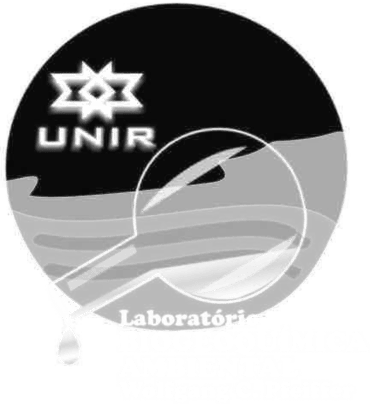Publicações 2017
Neurotoxic elements, Public health, Impact of land use, Mobility of Hg Species
ARTIGOS & PERIÓDICOS
Heterogeneity of Multimedia Exposures to Neurotoxic Elements (Al, As, Cd, Pb, Mn, and Hg) in Breastfed Infants from Porto Velho, Brazil
Wanderley R. Bastos, Solange M. Vieira, Ângelo G. Manzatto, José G. Dórea, Marcelo C. Rubira, Victor Francisco P. de Souza, Walkimar A. da Costa Junior & Maria T. Souza Bastos
Abstract: Infant exposure to neurotoxic elements is a public health issue that needs monitoring with regard to breast milk composition. We studied six neurotoxic elements in breast milk samples at different stages of lactation in mothers from Porto Velho, Brazil. We used a flow-injection mercury system (FIMS) to determine total Hg concentrations and an inductively coupled plasma optical emission spectrometer (ICP-OES) to determine the concentrations of Al, As, Cd, Pb, and Mn in 106 donors of a human milk bank. Association rules analyses were applied to determine the pattern of binary and ternary mixtures of the measured exposants. The metal concentration was mostly below the limit of detection (LOD) for Cd (99%), Pb (84%), and Hg (72%), and it was above the LOD for As (53%), Mn (60%), and Al (82%), respectively. Median concentrations (dry weight) of Al, As, Hg, Mn, and Pb were 1.81 μg/g, 13.8 ng/g, 7.1 ng/g, 51.1 ng/g, and 0.43 μg/g, respectively. Al is singly the most frequent element to which infants are exposed. Occurring binary combination (> LOD) was 56% for Al-Mn, 41% for Al-As, 22% for Al-Hg, and 13% for Al-Pb. In 100% of neonates, exposure to Al-ethylmercury (EtHg) occurred through immunization with thimerosal-containing vaccines (TCV). Association rules analysis revealed that Al was present in all of the multilevel combinations and hierarchical levels and that it showed a strong link with other neurotoxic elements (especially with Mn, As, and Hg). (a) Nursing infants are exposed to combinations of neurotoxicants by different routes, dosages, and at different stages of development; (b) In breastfed infants, the binary exposures to Al and total Hg can occur through breast milk and additionally through TCV (EtHg and Al); (c) The measured neurotoxic elements were found at low frequencies in breast milk and at concentrations that pose no public health concerns for milk banking.
Impact of Land Use on the Mobility of Hg Species in Different Compartments of a Tropical Watershed in Brazil
Clara Ayume Ito de Lima, Marcelo Gomes de Almeida, Inacio Abreu Pestana, Wanderley R. Bastos, Maria Cristina Nery do Nascimento Recktenvald, Cristina Maria Magalhães de Souza & Paulo Pedrosa
Abstract: This study evaluated the levels of total Hg and CH3Hg⁺ from a comprehensive perspective, considering the retention, leaching, and deposition of these contaminants in the main compartments (soil, plant litter, and sediment) of three landscapes (Atlantic Forest, pasture, and agricultural area) in a watershed in northern Rio de Janeiro State, Brazil. Variables analyzed were total Hg, CH3Hg⁺, organic carbon, total nitrogen, grain size, and surface area. In soil samples, total Hg levels were the highest in agricultural soil followed by forest soil and pasture (97.3, 87.6, and 77.1 ng g⁻¹, respectively), and CH3Hg⁺ was lower than 1.7%. Total Hg levels in leaf litter varied between 22.6 and 34.2 ng g⁻¹, and CH3Hg⁺ was 4.37%. In sediment, Hg (60–180 ng g⁻¹) and CH3Hg⁺ (<1%) indicate the transport of these contaminants from soils to this compartment and may be associated with soil use and cover. Multiple regressions were used to understand the dispersion of Hg species, and the effect of each variable varied with the landscape, showing that plant cover should not be ignored in investigations related to Hg species retention in a watershed. The landscapes surveyed in the present study clearly influence the quantitative and qualitative distribution of Hg species. On the other hand, anthropic processes associated with changes in soil use did not have any critical effects on the absolute levels of total Hg and CH3Hg⁺, meaning that the landscapes evaluated seem to represent the background concentration of these chemical species for the evaluated watershed.





